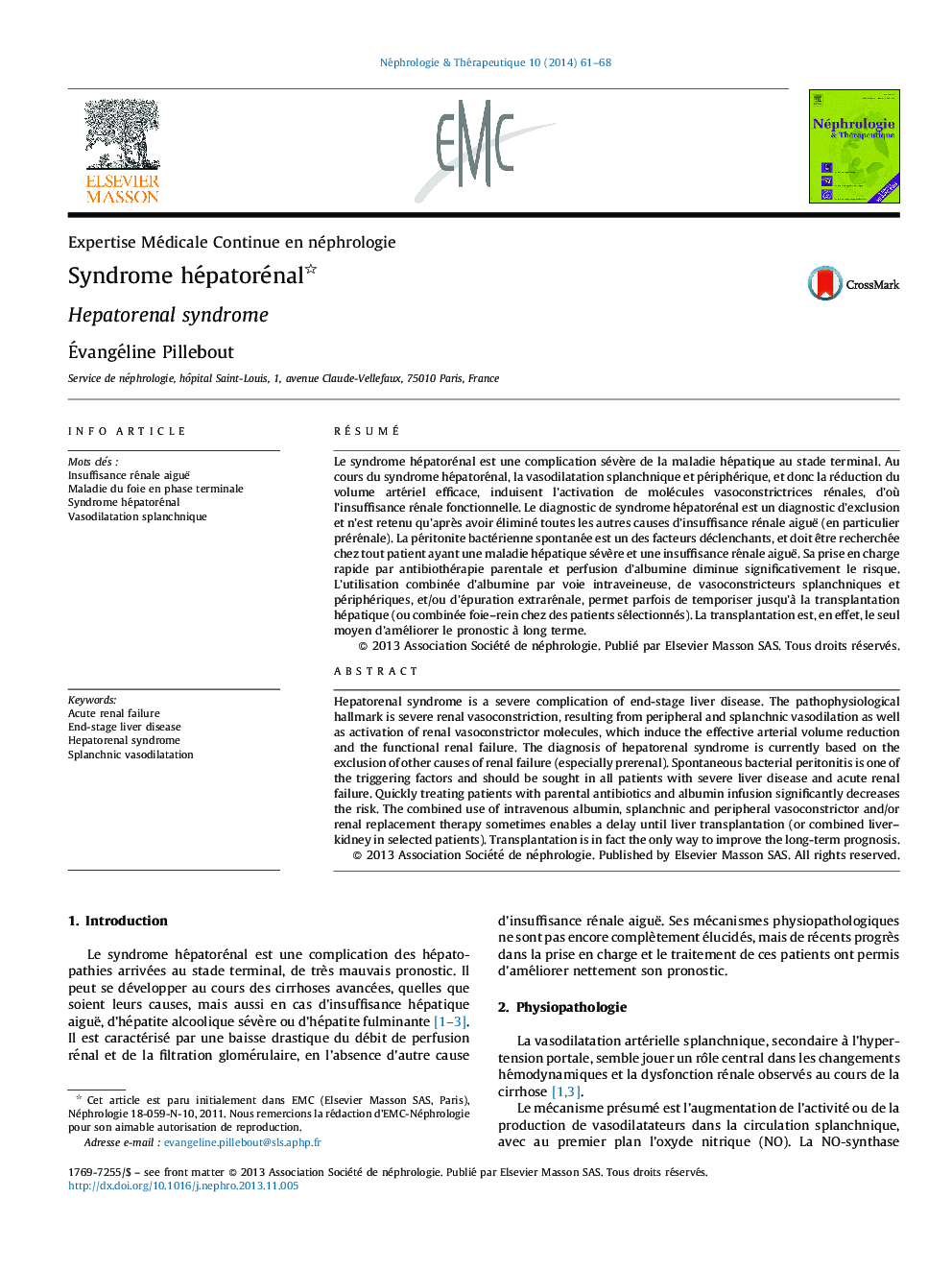| کد مقاله | کد نشریه | سال انتشار | مقاله انگلیسی | نسخه تمام متن |
|---|---|---|---|---|
| 3893919 | 1250105 | 2014 | 8 صفحه PDF | دانلود رایگان |

RésuméLe syndrome hépatorénal est une complication sévère de la maladie hépatique au stade terminal. Au cours du syndrome hépatorénal, la vasodilatation splanchnique et périphérique, et donc la réduction du volume artériel efficace, induisent l’activation de molécules vasoconstrictrices rénales, d’où l’insuffisance rénale fonctionnelle. Le diagnostic de syndrome hépatorénal est un diagnostic d’exclusion et n’est retenu qu’après avoir éliminé toutes les autres causes d’insuffisance rénale aiguë (en particulier prérénale). La péritonite bactérienne spontanée est un des facteurs déclenchants, et doit être recherchée chez tout patient ayant une maladie hépatique sévère et une insuffisance rénale aiguë. Sa prise en charge rapide par antibiothérapie parentale et perfusion d’albumine diminue significativement le risque. L’utilisation combinée d’albumine par voie intraveineuse, de vasoconstricteurs splanchniques et périphériques, et/ou d’épuration extrarénale, permet parfois de temporiser jusqu’à la transplantation hépatique (ou combinée foie–rein chez des patients sélectionnés). La transplantation est, en effet, le seul moyen d’améliorer le pronostic à long terme.
Hepatorenal syndrome is a severe complication of end-stage liver disease. The pathophysiological hallmark is severe renal vasoconstriction, resulting from peripheral and splanchnic vasodilation as well as activation of renal vasoconstrictor molecules, which induce the effective arterial volume reduction and the functional renal failure. The diagnosis of hepatorenal syndrome is currently based on the exclusion of other causes of renal failure (especially prerenal). Spontaneous bacterial peritonitis is one of the triggering factors and should be sought in all patients with severe liver disease and acute renal failure. Quickly treating patients with parental antibiotics and albumin infusion significantly decreases the risk. The combined use of intravenous albumin, splanchnic and peripheral vasoconstrictor and/or renal replacement therapy sometimes enables a delay until liver transplantation (or combined liver–kidney in selected patients). Transplantation is in fact the only way to improve the long-term prognosis.
Journal: Néphrologie & Thérapeutique - Volume 10, Issue 1, February 2014, Pages 61–68